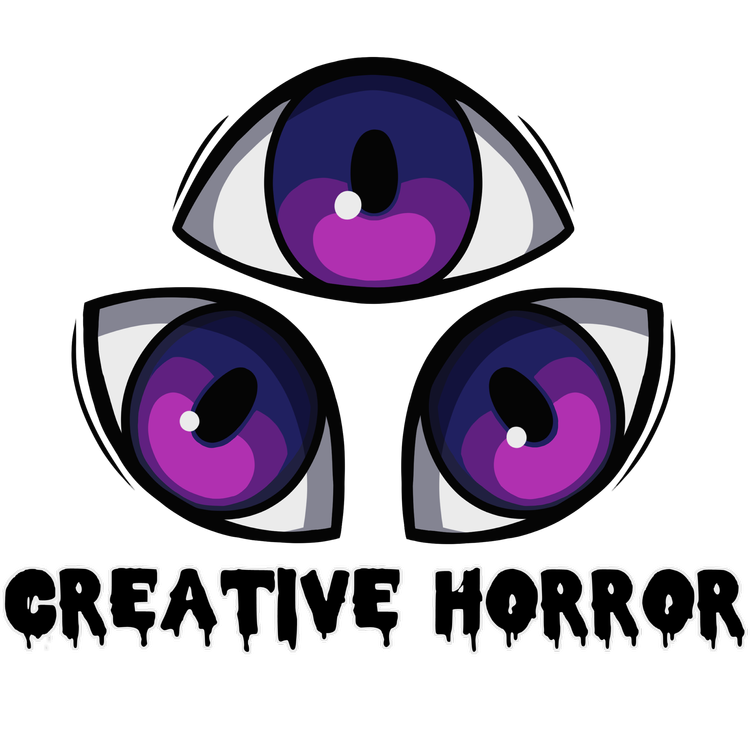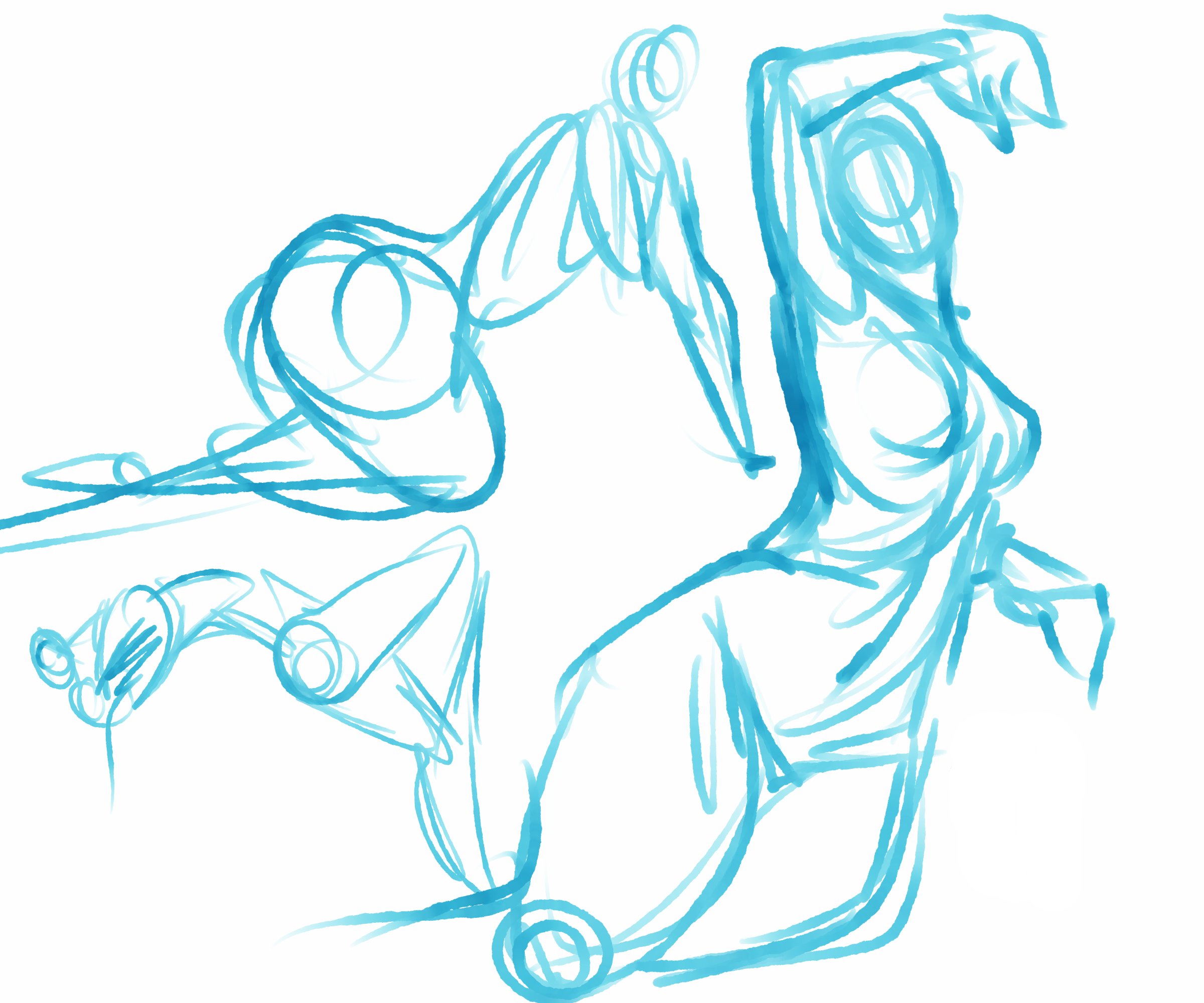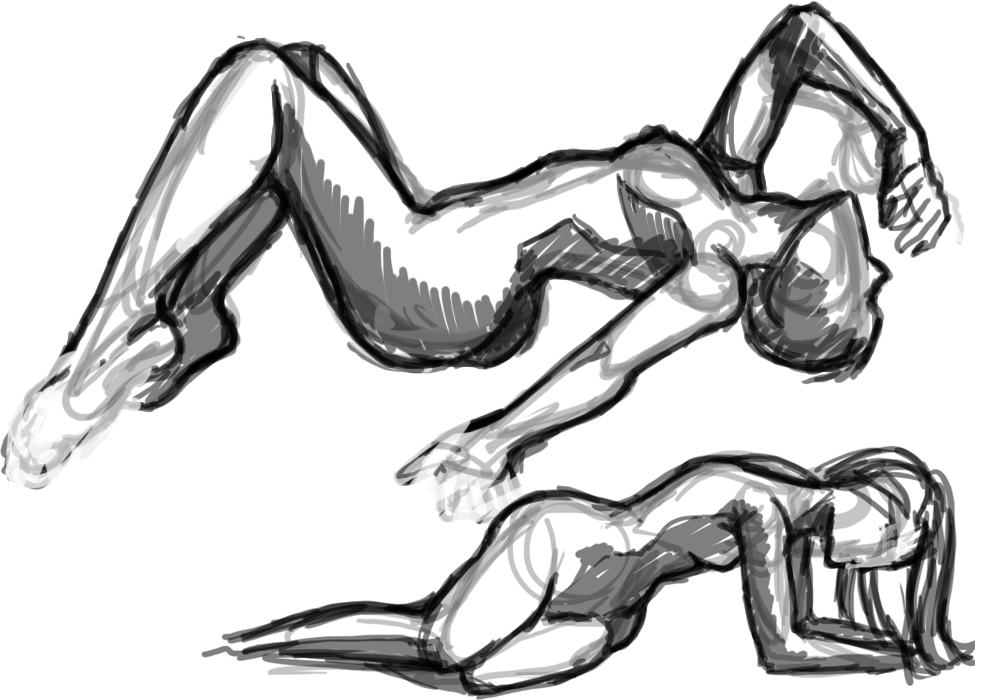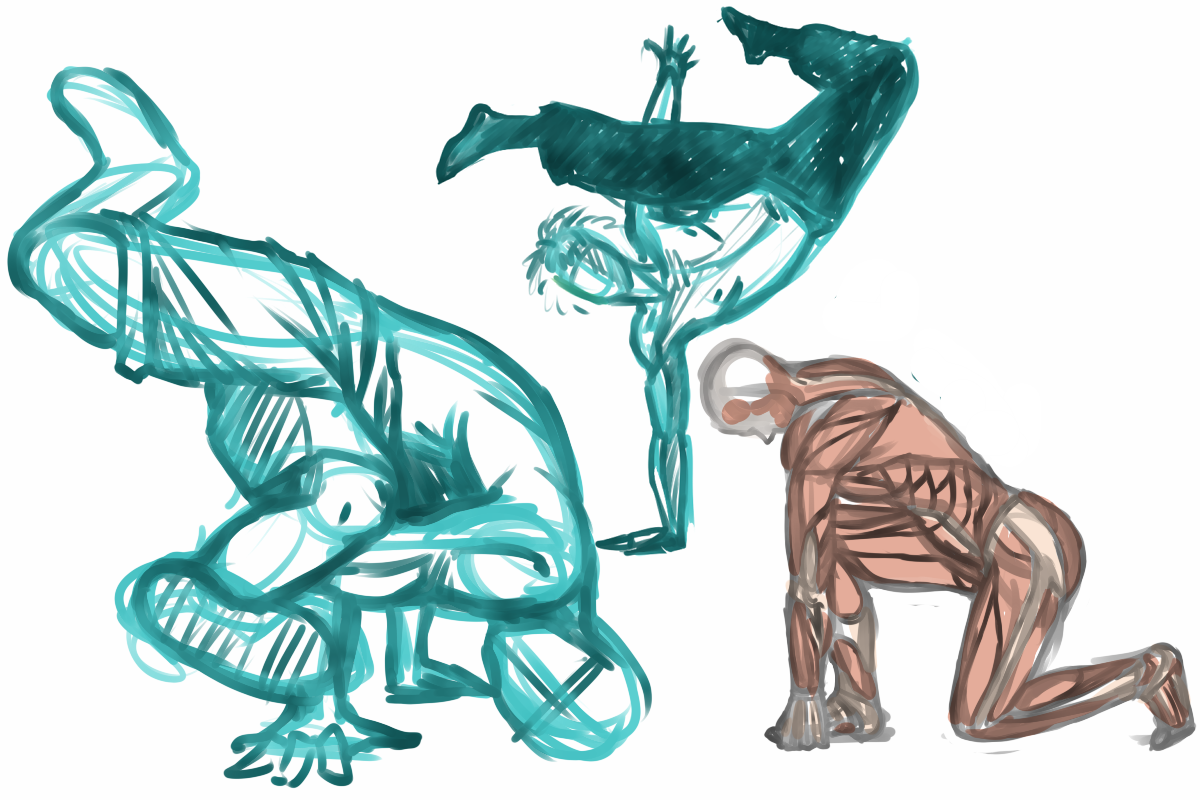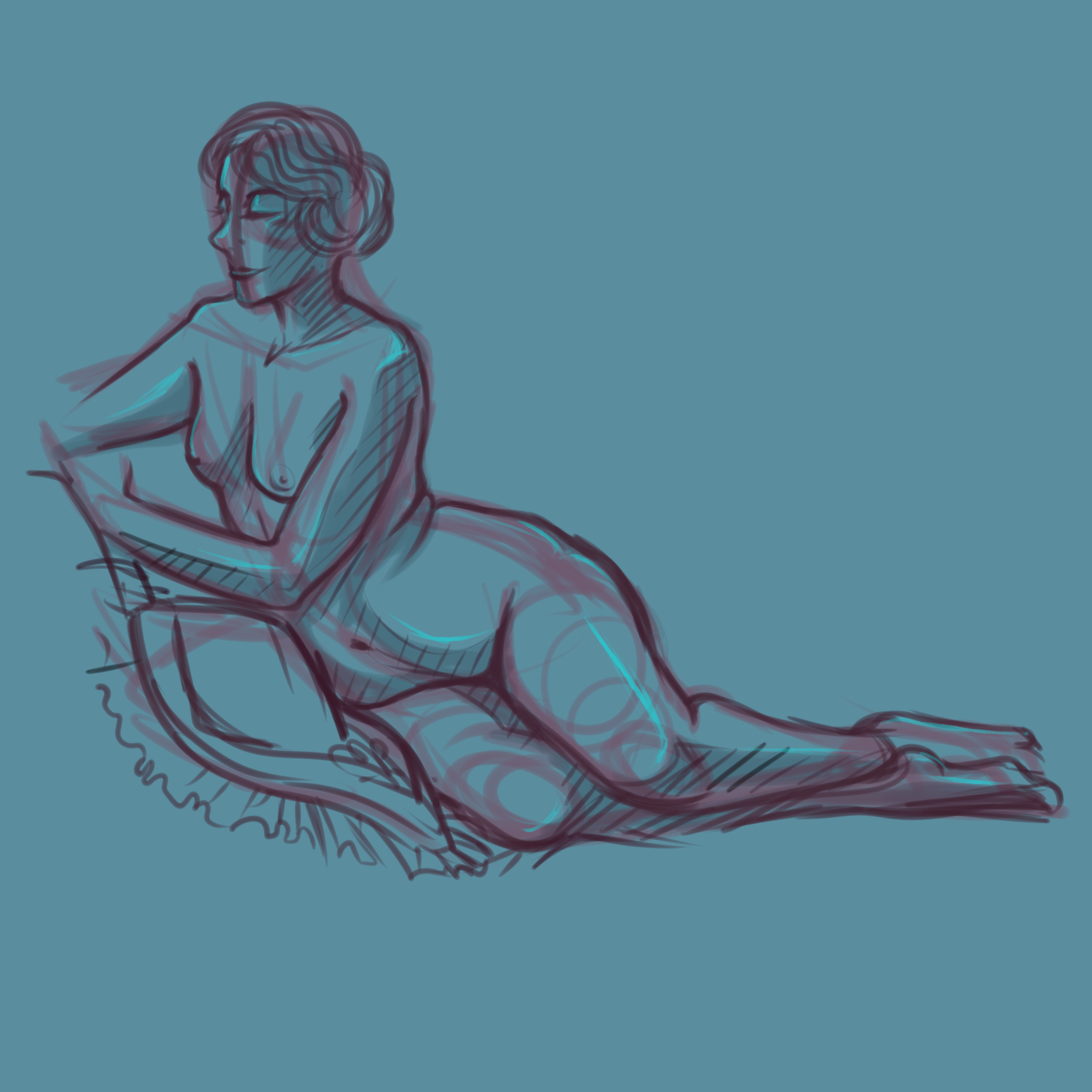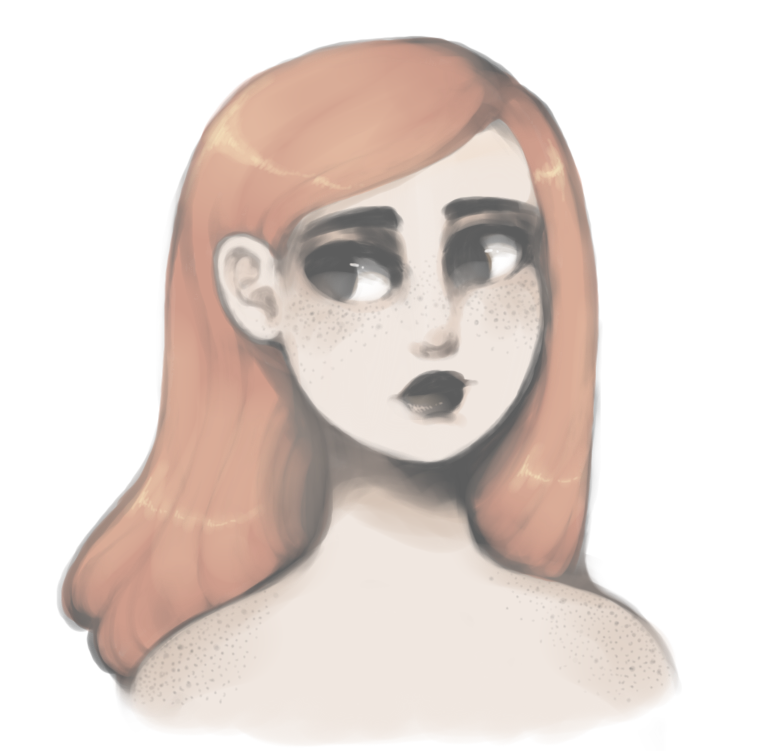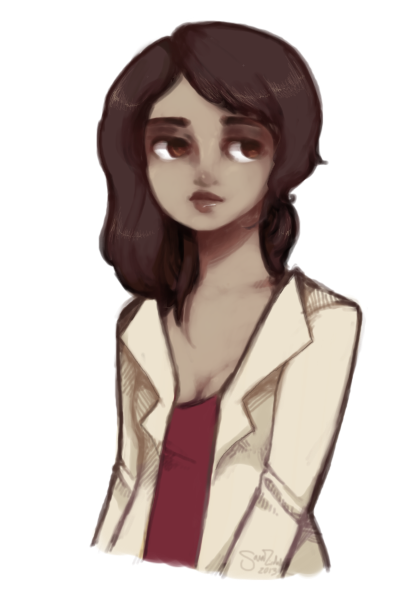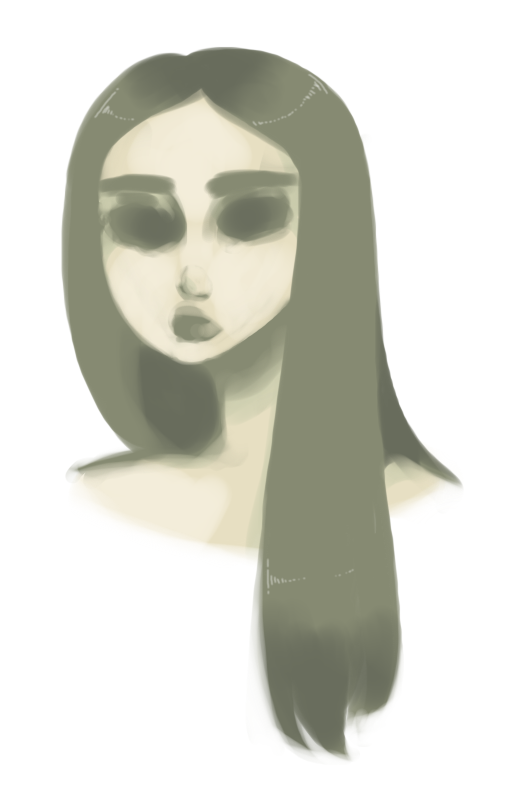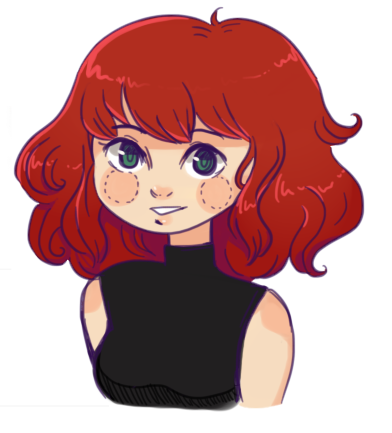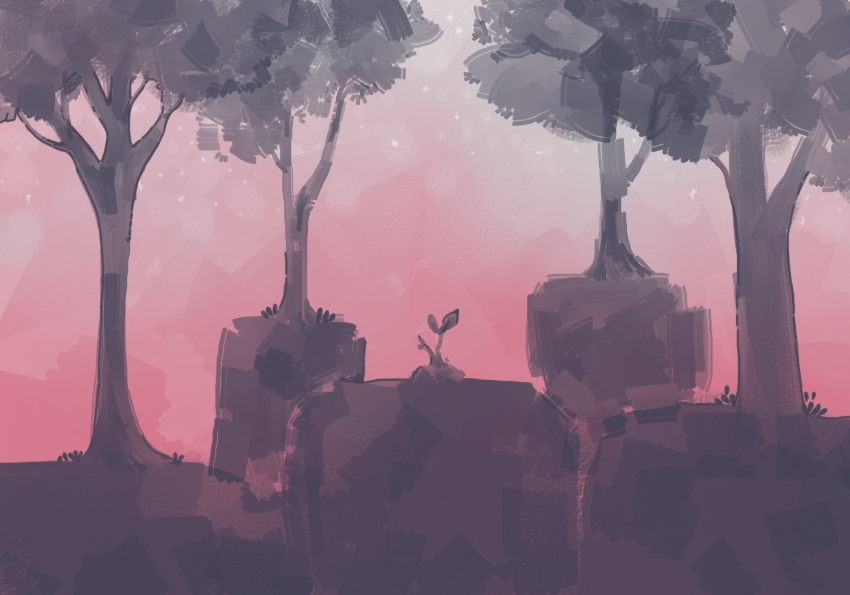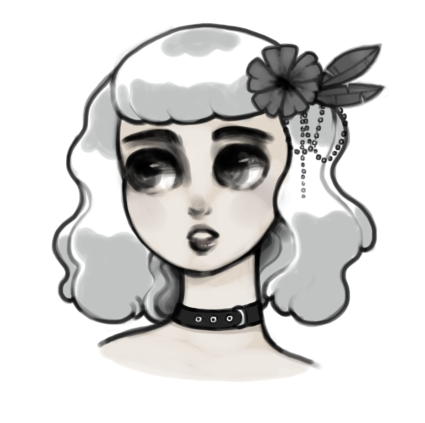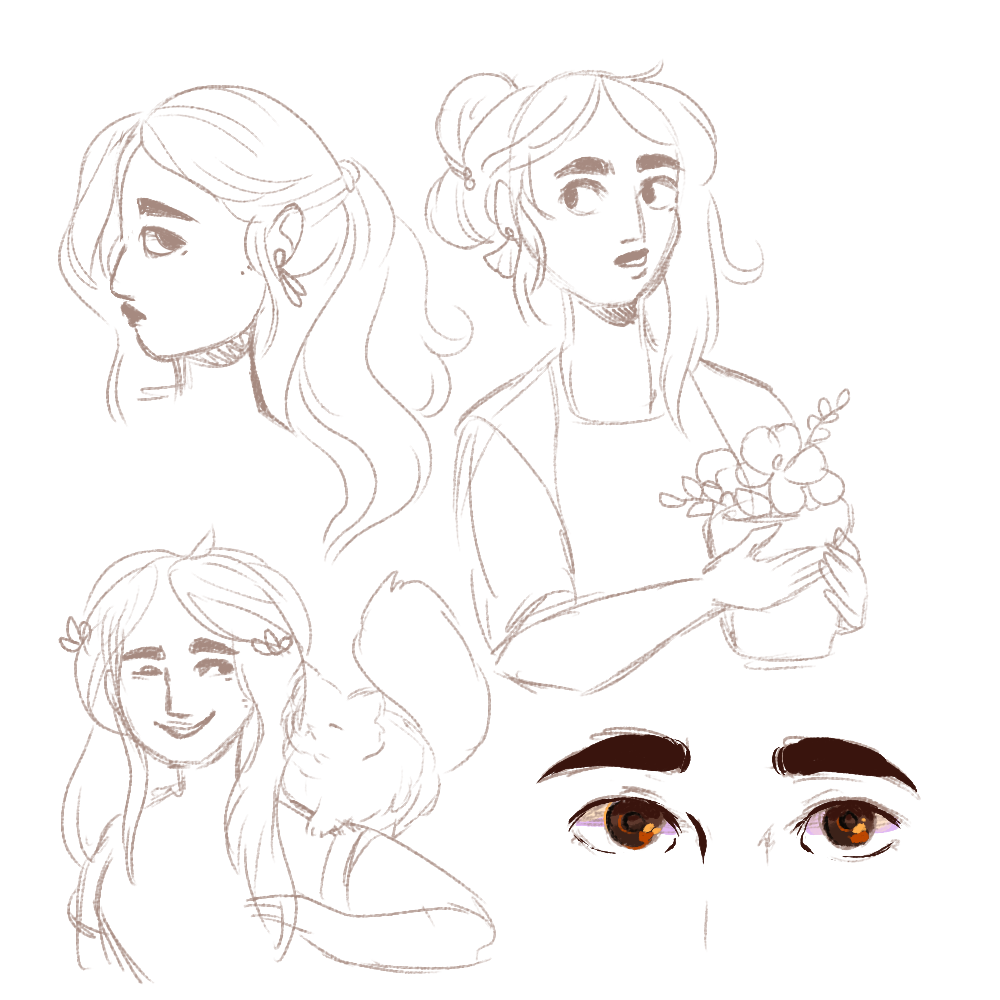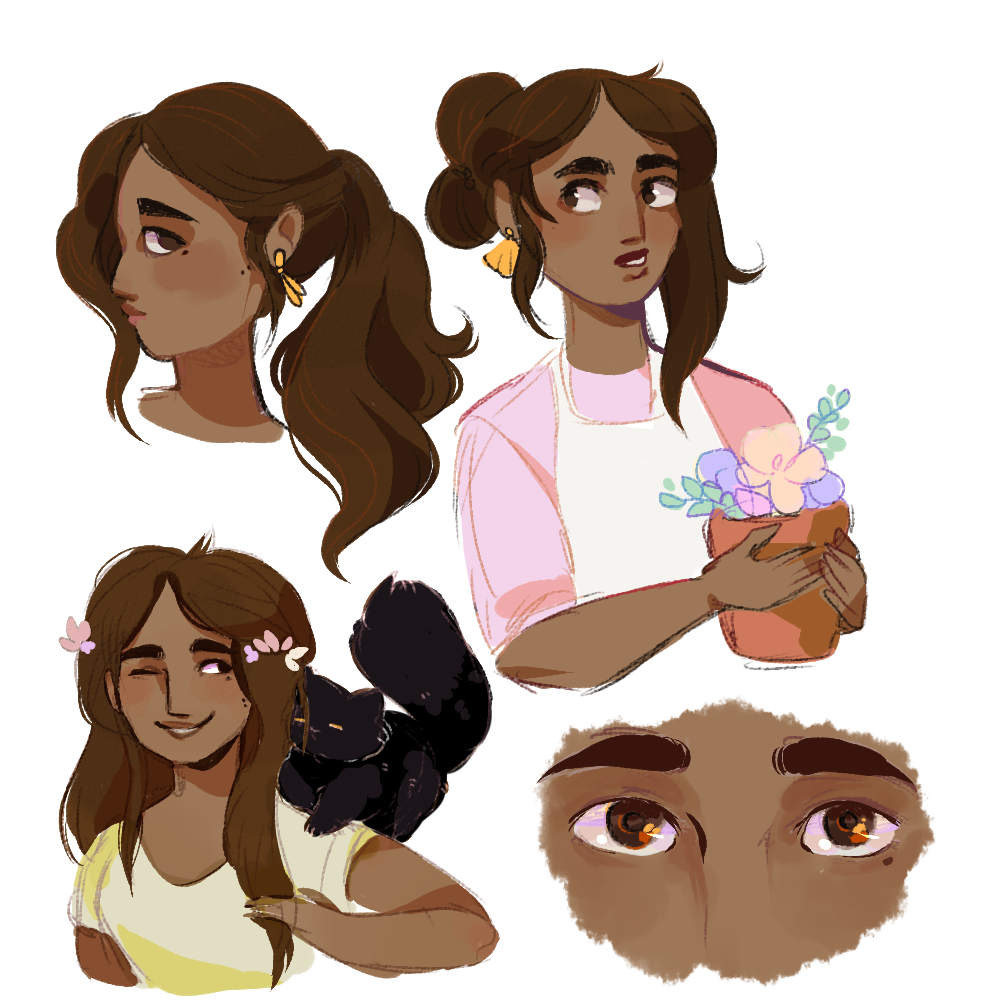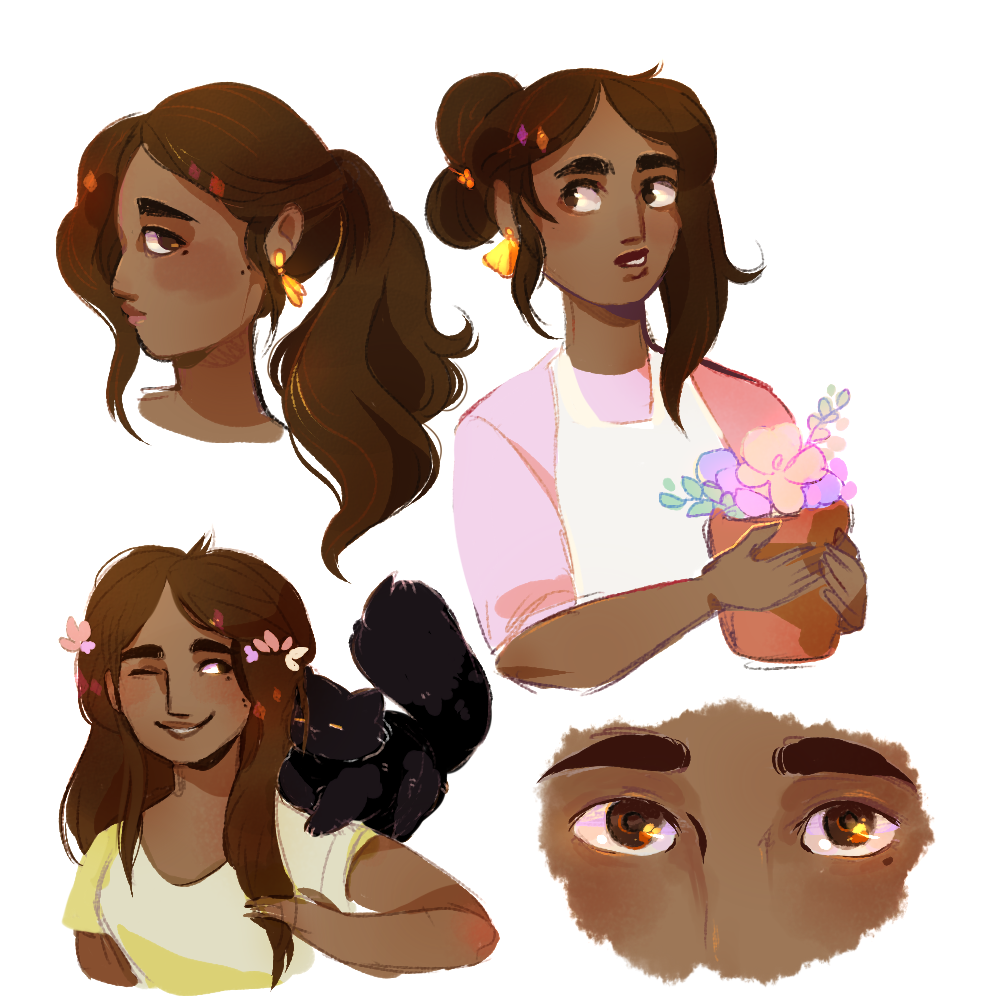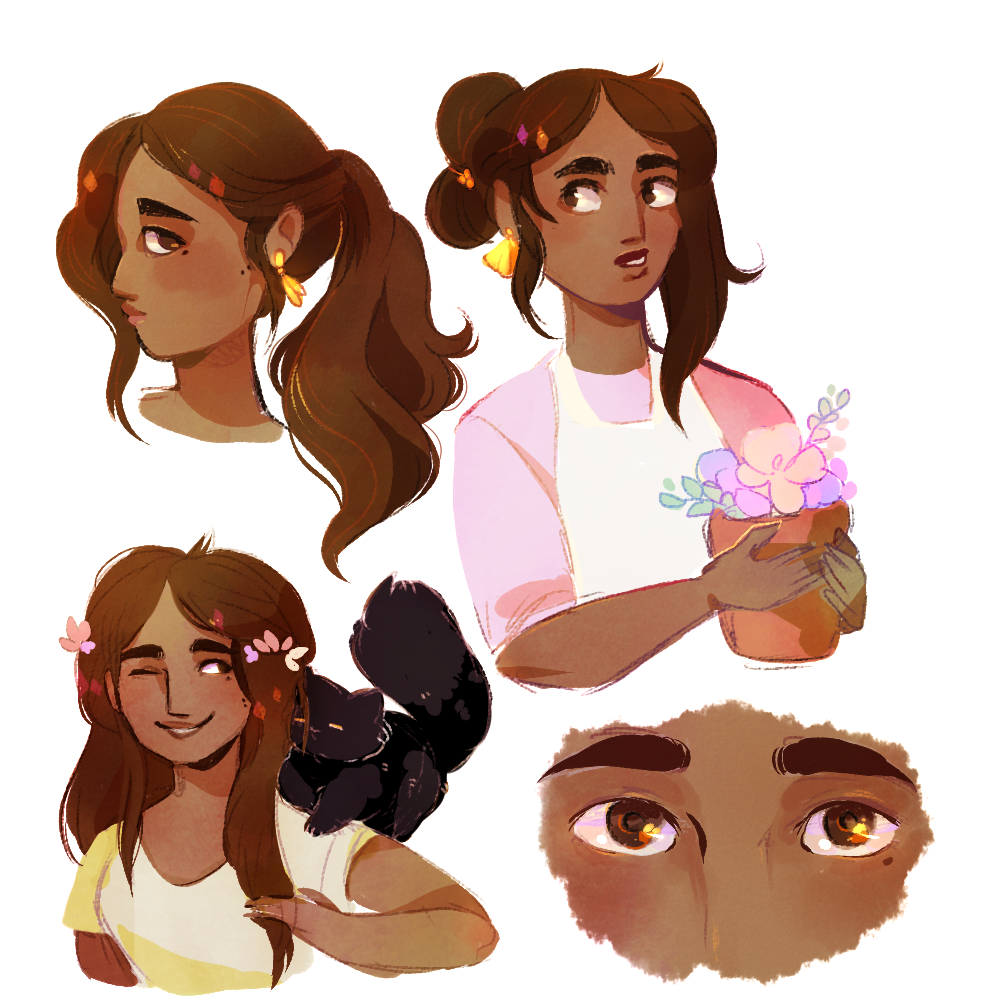Abysmii breaks down his creative process in writing and composing “Lure”, an audio drama episode of Midnight Mariana. Listen here before getting the inside look at how the episode was conceptualized and what you might need to consider when scripting a similar piece of media.
Drawing & Understanding Anatomy
Why is anatomy so difficult? I call myself a character artist because I love creating characters in both written form but especially drawn out on paper (or in pixels). Whether it's human or animals that you draw, anatomy gives us all a pretty hard time. Perhaps part of the reason I like drawing monster designs is because I can get away with some, not all, but some funny looking anatomy. I asked a couple of artist friends the same question.
Our friend Sergle, who I interviewed here on the blog, said that it might be because we have a good visual memory of what the body looks like but it's hard for us to process that from our brain to hands in pen strokes. RaeAnne, our part-time host from the podcast had a similar answer. That we see it (anatomy) all the time so we notice anything and everything wrong with it. And I have to agree with them both. Our brains are hard-wired to recognize the human face and form. So even the most subtle inaccuracies can stand out to us. Still, though, it’s not a satisfying answer. I doubt that if we had a good enough answer it still wouldn’t change the fact that the only way to master anatomy as artists is through hours of dedicated practice.
Great places to study:
So from here on, I’ll be talking specifically about human anatomy but all the tips I share can be applied to animal anatomy as well. I’ve mentioned before that part of the purpose of this blog is for me grow as an artist alongside readers. As I learn, I’m going to share it all with you. My intent is to tackle the biggest hurdle I can think of first. Yes, anatomy.
Let's start with some great places to learn anatomy. Below is a quick list of some great sites to find poses. Each of these sites have a great library of poses to work from. They also have a great set up that lets you set up a timer that'll switch between poses for you.
But you’re going to need more than a good stock of poses. I’m going to give you the most basic but most effective tips and tricks to learning anatomy. The first one is pretty obvious, but possibly the trickiest. That’s working from live models. If at all possible, sign up for drawing/gesture classes that use live models. Next best choice after that is to ask a friend or roommate. Maybe head out to park and sketch people there. At the very least, grab a mirror. I know I’m saying this after I just listed those sites above and the sites are great but you’ll learn so much more from live reference.
My next tip is to grab some paper and dig out some pencils. Most of the artists I know personally, along with myself, very seldom touch traditional mediums anymore. But trust me on this one, I’m not the only person to recommend this. So let's dig out that neglected sketchbook and maybe buy some new pencils as an incentive. Below are the sketchbooks I’ll be using over the next few weeks to practice anatomy.
We’ve got our models or stock poses lined up and we’ve got our materials ready. What’s the plan of attack? Gesture drawings and detailed studies. Hard to say which to start with because I’m not sure whether starting with either or will be that effective. I do know that you’re going to need to implement both. Gesture drawings are simple but they might actually be more difficult than detailed studies. With a detailed study, you’re focusing on recreating what’s in front of you. Lines, shapes and structures. In gesture drawing, you’re trying to capture the movement and flow of the body.
Here some of my gesture drawings and a couple of detailed studies I did a long while back.
Now, for gesture drawings you want these to be quick. Don’t spend a lot of time on each one. Set a timer. What I’ve done in the past is start with 30 to 60 seconds per pose. This is a great way to warm up. After about 15 or 20 poses, extended the time. 3 minutes, 15 minutes, 30 minutes and work up to a good 60 minutes. It's when you get to the longer times that you should be doing your detailed studies.
Which brings us to the fact that we need to make time for this. Time is vital and we’re always short on it, but if you’re committed to mastering anatomy and becoming a better artist you need to set aside some time for practice. I mean every 2 or 3 days if not daily. Once a week might be easier but you are not going to make the progress. If once a week is all you’ve got, though, hey that’s still better to than nothing. Really make an effort, though. Whether its anatomy practice or just drawing in general. Practice your craft.
And with talk of time comes our last tip, perhaps the one thing you’ve heard all your life. Have patience. Or maybe, better yet, have endurance. If you really devote the time, you will see improvement. It’s just a matter of having the patience, the endurance, and dedication to stick to it.
So with all that said, I want to share one last thing with you. I came across this, SirWendigo’s Anatomy Lessons - How To Improve Faster In 6 Steps. It's essentially a self-study course you can work through on your own. Over the next few weeks to a couple months, I’ll be going through it myself. So I encourage you to do the same! You can share your own progress with me on Twitter @DeadEndReyes and @witchhourhorror. And let me know what you think the answer is to our question, “Why is anatomy so hard to draw?” Or let me know what’s the most difficult part anatomy is for you. For me, it's always feet. Feet and toes!
Until next time!
5 Habits To Help You Grow As An Artist
Perhaps my biggest passion since the age 9 has been drawing. Since then I've always had a love for art and from there anything creative. These days, I mostly find myself doing digital art and I've narrowed myself into a corner, meaning that I tend to just draw my own characters. While I dabble in acrylic painting, watercolor and even use to sew plush dolls, I haven't done much this in the past few years. When it comes to growing as an artist I've come to a bit of a stand still but I have full intention of changing that with help from this blog.
Before I start on good habits every artist should adopt, I'll start with the biggest mistake we can all make. One that I'm very much guilty of, and that's the lack of practice. I follow a handful of young artists on sites like Deviantart who when I first met showed real promise. It's the ones that I see producing new consistent pieces of content, from 4 to 10 or more, a week that I've seen grow exponentially. At times, I find myself rather jealous of their growing skills but know I can only blame myself and lack practice.
So these five habits I'm going to share with you are ones I've learned from myself, and I'm looking to reapply or take up for the first time because I've seen first hand how they've helped others.
1.] The first habit is very easy. Look around you. Throughout the day make a point of looking at your surroundings, whether that be at school, work or on the street. Look at objects, at people and their faces. Visually break down what you see down into components and think about how you would put it all back together on paper. Watch for body movements and posture to the way wrinkles form on people's clothes. What’s everything you can learn from them visually? Emotions, age, background, etc. How can you replicate all that in a drawing, painting or animation? You can learn so much by just being aware of everything around you and studying its details.
2.] Sketch every day and every chance you can if possible. Doesn't matter if it's on a sticky note, napkin or in a sketchbook you carry with you (and you always should carry one). If you have to set aside at least 10 minutes to sit and draw. And draw anything. The important thing here is to keep yourself in practice. Even if all you drawing each day are little doodles, this habit more than any other I think will help you improve the most. An added note, try to always carry a sketchbook with you. Carry it like a lifeline. You won't have the excuse of not having anything to draw on and it's a place to jot down ideas or reminders. I always carry a sketchbook or notepad of some form. I even have a couple small ones to fit into my back pocket. Carrying a pen is the real hard part, surprisingly.
3.] Put the pencil down and sketch with ink! Hide all your pencils and find a pen you like. I learned this one from an old friend who would only draw in ballpoint pen and he explained it to me when I finally asked why. Drawing with pen means we can't erase any mistakes, and that’s exactly why you should draw with it. It forces us to work with our mistakes by either changing the drawing to cover it up or making it look intentional. I think after time it also helps us become more confident in the lines we put down because we're less afraid of making those mistakes.
4.] Horde reference material like a dragon and use it. If you're working on a piece, having reference for anything from lighting, color, anatomy to composition will increase the quality of you final product ten fold. You learn so much from having solid reference to work off of. I suggest compiling a folder or some kind of collection for the thing you like to draw and especially for the things you really struggle with.
5.] Which takes me to my last point, face your fears. By that, I mean any fears or hesitation of drawing things that are difficult. Anyone else hate drawing feet? Why are they so hard to draw?! To combat this I'm going to put aside time to just draw feet. Feet and anything else that makes me pull my hair when I draw. I suggest you do the same. I had a teacher once tell me he hated drawing wrinkles on clothes. So he took an old fat Macy's catalog and sketched every item of apparel in it until he was confident he had mastered wrinkled clothes.
Some of these you've probably heard before and you're seeing them again here because they really do work. It's just a matter of how determined you are to put them into practice.
Have any another habits or tips you want to share? Comment below or tell me about that on Twitter @DeadEndReyes, I’d love to hear them.
Sergle - Artist Interview
Today, I’m really excited to bring you guys an interview with a really good friend of mine and an amazing young artist. Her name is Sara Tisdale, but you can find her art under the name Sergle. When we first met, some time back through the deviantArt community, I had already noticed her before hand for her gorgeous pixel art. Which at the time was primarily what she did. So when she messaged me about a possible collaboration one day, I was ecstatic. Of course, her pixel skills far surpassed my own and since then not only has she improved but she’s also branched out into digital illustration.
The thing that really stuck out to me then, and I sometimes forgot this because her work was so fluid and beautiful, is that Sergle started out in illustration working with a mouse. Without access to a tablet and pen, Sergle worked with a regular old computer mouse which to me is like trying to paint with a bar of soap. Below are examples of older pieces she did before she finally picked up a tablet, I couldn't settle on just one.
In the time that I’ve known
First then, can you tell me a bit about yourself and what you do as an artist?
As far as I go, there's not much separation between who I am as a person and who I am as an artist since it's my main passion. I'm really involved in cooking, cats, talking too much about my personal life on the Internet, etc. It's fun stuff. But the art is more fun- a lot of the art I do I feel is inspired by fairytale style stuff, but it varies. I do a lot of character designs and fanart too, and the fanart is DEFINITELY a big part of where I place myself in the art community. Overall though what I aim to do is make things that are fun to look at, and I'm learning as I go.
I think in the time since I first met you, you've really grown as an artist. What are some things that motivate you when you start a new piece and keep you creating more?
You know, it depends on if I have a plan or not. When I have some kind of visual in my mind when I start, the piece never quite comes out how I want, and in a way that motivates me to make it look more and more like how I'm imagining it. But I mean, that's the sophisticated answer. Aside from
You have really beautiful style that I've really enjoyed watching you develop. From what places or even people do you pull inspiration from?
I take inspiration from a lot of garbage, it all plays a little part. I really like Pre-Raphaelite paintings, fairytale inked illustrations and my fair share of cartoons. Steven Universe is playing a big role right now, and there are a lot of webcomics and individual online artists I follow and enjoy too. Phobso is especially amazing, I really aim to make my work look that soft.
Those are the things that I'm actively inspired by. There's also all those seasons of Spongebob that I'm ignoring. Disney and Don Bluth stuff is also a big influence, it's pretty inevitable. BUT MOSTLY THE OTHER STUFF.
Can you tell me about your art process a little? When you have an idea of the image you want, what's it look like from start to end?
My art process is SUPER disorganized. A lot of it is made up as I go- whatever happens just happens naturally, for most of my personal art. But the idea that makes me start is usually just the vibe I want the art to have. Like, if it's supposed to be really energetic and cute, or if I'm going for something more relaxed. The colors in my art are also a big deal to me, so sometimes a piece is quickly put together just as a vessel for some colors I wanted to use. The thing just kind of happens, and it keeps happening.
It looks like a simple outline at first, and by the end it's snowballed so much more detail and color and dimension over the course of it. Almost none of my addends are planned.
Where would you like to go from here as an artist?
I mean, ideally I'd like to be paid to draw
When you say you'd like to be paid, does that mean you'd consider doing work for someone else? For example, I'd love to hire you for a comic or to do a cover for a book.
Definitely. There are a lot of things I'd like to do on my own, but being hired on as an artist for projects or a more long-term thing is in my books, too. Working on someone else's ideas could, I think, be a lot of fun, and give me a chance to stretch my abilities a little. As long as the person sees me as a person working on a project alongside them rather than an art-production tool, which has totally been a problem for me before. I'd be really pumped to work on something with you.
Lastly, where is the best place people can find you? I know there's Tumblr and DevaintArt, but do you have anything else like Twitter? Maybe a website in the works?
Technically I have a twitter, but I post almost nothing there, so I'd say that the best place to see my stuff is through my art tag on tumblr.
You can find Sergle through the following links. And check out the stickers she’s selling over on RedBubble.
Hope you enjoyed the interview. You can leave feedback in the comments below, it’d be super appreciated! Or tweet me @DeadEnd_Seid and let me know of any artist you’d like me to interview in the future.
Libbie Says Take Off Your Pants!
Today I have a book review, but really it’s more of a recommendation for all my fellow writers. But first let me ask, what kind of writer are you? Do you like to sit and plan out the entirety of your story before you write anything or do you like to start with just some ideas in your head and let it see where it takes you? Whichever kind of writer you are, I think this book can help you. It’s definitely helped me piece together a productive writing process.
Take Off Your Pants! By Libbie Hawker. You may or may not have heard the saying “Flying by the seat of your pants.” I’ve personally never used it and when trying to explain it to a friend they had no idea what I was talking about! So if you don’t know, this saying really just means something along the lines of “following your gut or intuition”. In this context, we’re talking about writers who let their stories guide them. It turns out some people call this method of writing ‘pantsing’ in reference to the saying.
In Libbie’s book she talks about the benefits of planning your story out before hand and thus “taking off your pants”. Now there’s no write or wrong way to go about writing your stories. We’re all different writers and different things work for each of us but I think Libbie provides some solid advice. Before this book and for years, you can say I was a “pantser”, I planned as I wrote. Usually I would start with some ideas, a good sense of where I wanted to go and even some scenes. I would try to keep that all organized in my head and more often than not I would hit road blocks. At the start I was never sure how to begin, and once I got started I’d often struggle getting from one scene to the next. I knew where I wanted to go but didn’t know how to get there. Libbie goes into detail explaining her outlining method, and I had tried outlining in the past but never anything very organized. After reading the book I adopted Libbie’s method for a couple short stories and was pleased by the results.
I’ve made some changes and adapted the method to better suit my own style and thought process, but what I got out of Libbie’s book was very valuable. I have now a plan of attack for every story I take on. Now, just because I have an outline before I start any story doesn’t mean I’ve set my stories in stone. For me the best part of writing is when my characters take over and lead me to places I didn’t even consider before. I happily deviate off the outline when the urge takes me. Sometimes it works it’s way back to the original outline or I adjust my outline and keep moving forward from there.
As Libbie goes through her outline process, she touches on character arcs and plot. About how to keep a pace that will make readers struggle to put down your work. Even if you don’t think outlining will ever be for you, there’s a lot to learn in the book about what to consider as your story comes together. So I really do recommend this to any writers, and I promise I’ll never send you out after anything that I didn’t find to be a great help. You can check out Libbie’s book on Amazon or feel free to ask me about it in the comments.
To help support this blog and partnered podcast, there are affiliated links in this post.
